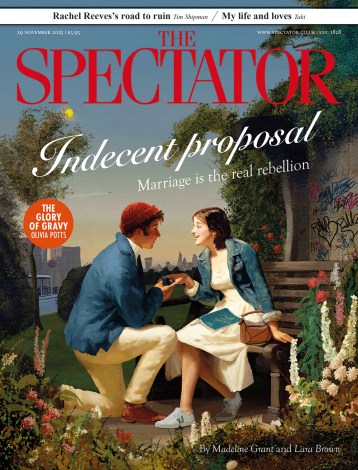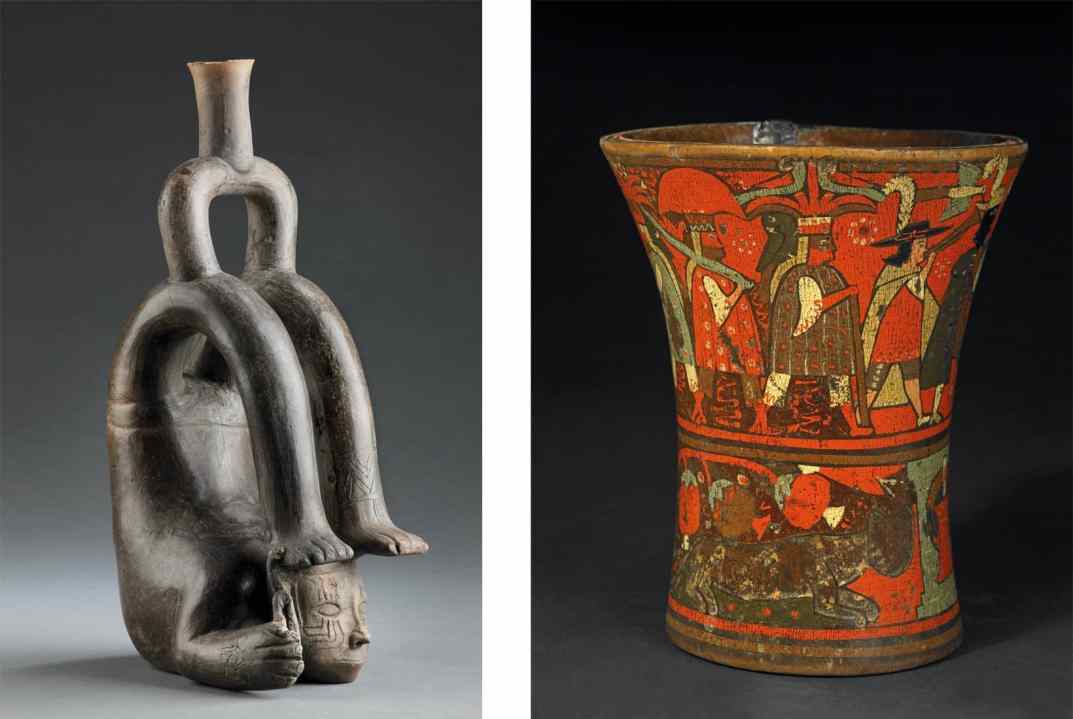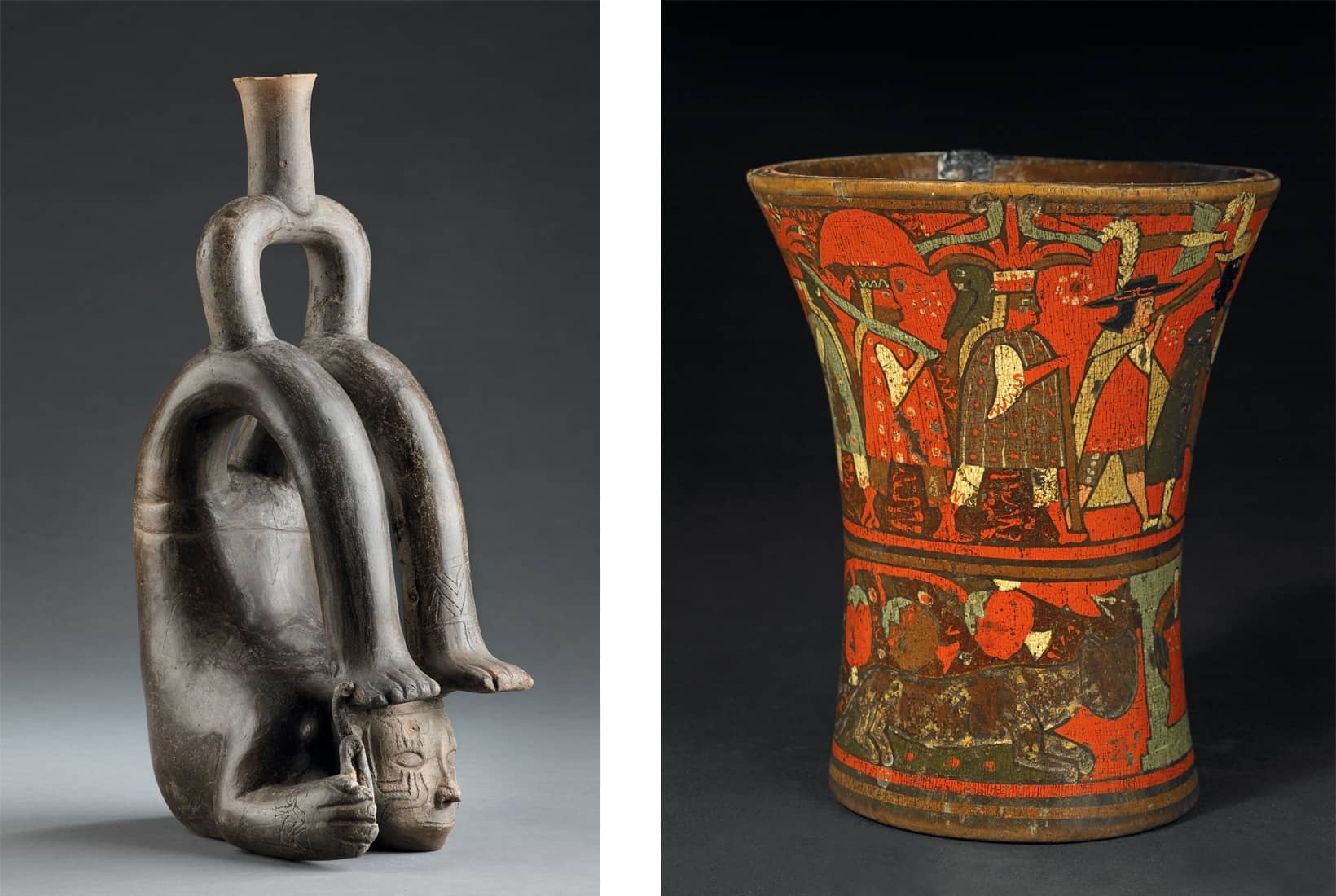Growing up on a farm outside Lima, I was aware that indigenous Peruvians did not understand time in the same way that their white countrymen did. On our visits to the highlands, we would encounter a very different mode of thinking. Ask an Andean villager where the next settlement was and you’d be told, ‘aquisito no más’ — just over here. Whether ‘aquisito’ meant around the next bend or four days’ schlep across the mountains was, for aboriginal people, a meaningless question. They were not ruled, as their European-descended neighbours were, by clocks. You’d sometimes see Quechua-speaking herdsmen sitting motionless for so long that they seemed to have switched off and become part of the landscape.
Peru: A Journey in Time sounds like one of those generic names chosen by committee. But the title encapsulates what the British Museum’s display is all about. Yes, you will see rich and wonderful treasures here. There are ingenious works of pottery: warriors and gods, contorted animals and couples having sex. There are gorgeous textiles, many of them designed for ritual use and depicting metaphysical realms. There are feathered tunics, exquisite earrings, mummified sacrificial cadavers, a tiny and perfect golden llama. But these items have not been chosen for their beauty. They are here to help us appreciate a different conception of the universe.
This gives you a better sense of indigenous Peru than you will find anywhere outside that country
The exhibition has been more than a decade in the making, and it shows. Nothing here feels contrived. Dozens of collections from around the world, public and private, have been surgically ransacked. Their riches augment several items in the British Museum’s own hoard that are not normally on display. The result is a thoughtful and occasionally gruesome miscellany that gives you a better sense of indigenous Peru than you will find anywhere outside that country.
Why have the show’s Peruvian authors gone to such lengths to send their greatest treasures to London? Because, believe it or not, they like us. The show has been timed to coincide with their country’s bicentenary, and the United Kingdom was instrumental in the birth of the new state. The British officers who fought for Peru’s independence in 1821 are largely forgotten here, but they are fondly remembered in their adopted country. In a message from his new president on the opening night, Peru’s able and amiable ambassador recalled some of these heroes: William Miller who, after a successful Peninsular War, became one of Peru’s greatest generals; Martin Guise, who resigned his commission in the Royal Navy and went on to command Peru’s fleet; and Lord Canning, of course, whose decision to support the Latin American republics was the decisive factor in allowing them to win their independence.
Two hundred years on, here is payback. We get to see pre-Columbian Peru spread out in its ample and eerie majesty. The Incas are not the beginning of this exhibition, but the end. The show’s focus is on the peoples who preceded them: Chavin, Paracas, Nasca, Moche — named after the places where archaeologists found their remains (we have little idea of what they called themselves, for there was no writing in Peru before Pizarro, and the Incas absorbed the peoples they conquered). You can’t come away from the British Museum without a sense these earlier cultures were, at least in some ways, technologically superior to their Inca inheritors.
There is no sense of Western-style progress here. Go to a European museum and you will see artistic ideas evolving. Each subsequent room in a gallery shows some advance as painters discovered first foreshortening, then perspective and so on. There is none of that in pre-colonial Peru. The Incas may have been better spearmen than the tribes they assimilated, but they were inferior potters and weavers.
Which brings us back to notions of time. One thing these civilisations had in common was an eternalist view of existence. They did not think, as we do, of a known past, a real present and an uncertain future. For them, time was a unitary block, though our human limitations meant that we could not always see it that way. Many Buddhist philosophers thought the same; so (insofar as I can understand them) do modern theoretical physicists.
Contemplating these religious artefacts with their eldritch birds and wild cats and serpents, you can feel that you are peering into a vortex. You sense, with William Blake, what it is to ‘hold Infinity in the palm of your hand/ And Eternity in an hour’. Even that exquisite golden llama was made to accompany a sacrificed child to another dimension. No, these people were not like us. By the time you tear yourself away, you will feel more clear-headed, yet vastly more uneasy.







Comments